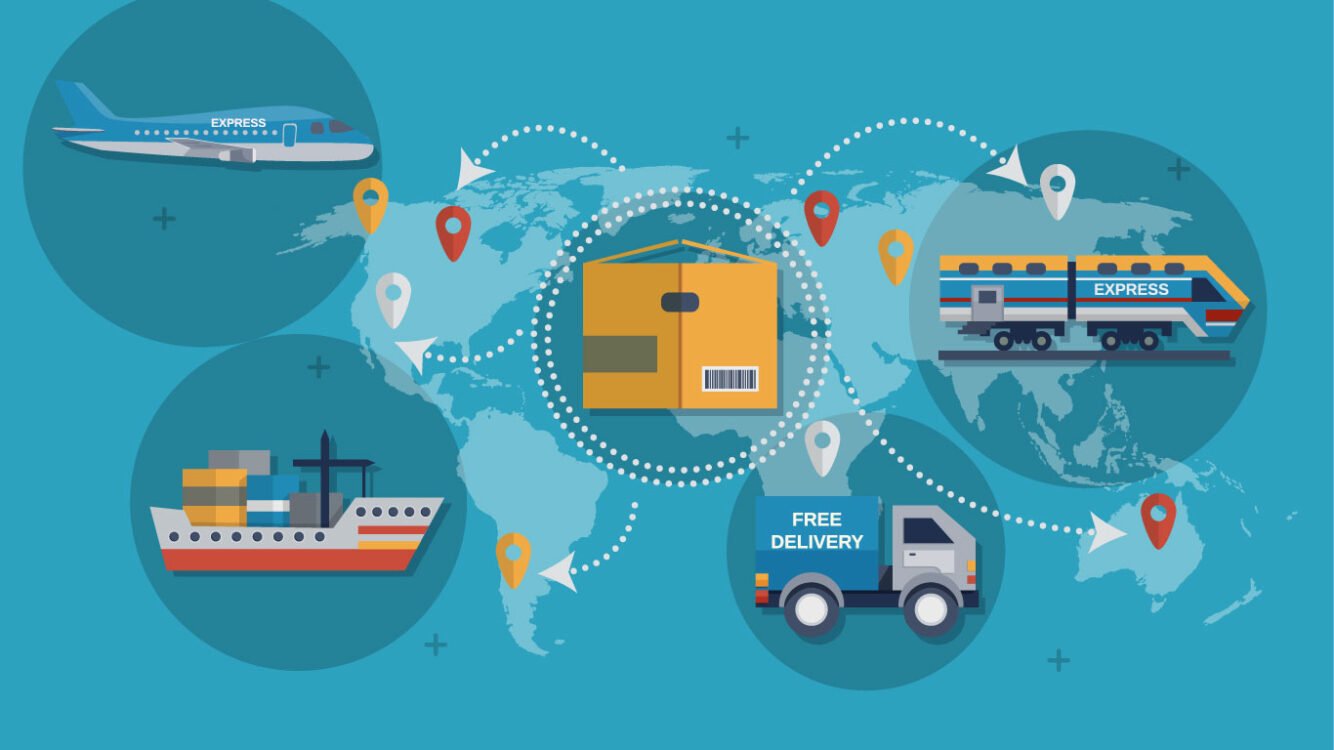
Introduction
Logistics solutions in the USA are becoming the backbone of business survival in 2025. With frequent supply chain disruptions—ranging from labor shortages and fuel price hikes to port congestion and extreme weather—American companies need smarter ways to keep operations running smoothly.
Instead of reacting to crises, businesses are now adopting proactive logistics strategies powered by technology, automation, and third-party expertise. These solutions are helping wholesalers, distributors, retailers, and manufacturers not only overcome disruptions but also build stronger, more resilient supply chains.
“According to the U.S. Department of Transportation, logistics plays a vital role in ensuring economic stability across the U.S.”
The State of Supply Chain Disruptions in the USA
Disruptions have become the “new normal” for U.S. businesses. Some common issues include:
-
Labor shortages in trucking, warehousing, and ports
-
Fuel price volatility increasing transportation costs
-
Port congestion at major U.S. entry points
-
Natural disasters such as hurricanes, floods, and wildfires
-
Global political instability affecting imports and exports
Without strong logistics solutions, these disruptions can lead to stockouts, revenue losses, and damaged customer relationships.
“The Federal Motor Carrier Safety Administration reports that driver shortages remain a critical challenge for freight and logistics providers.”
Why Businesses Need Smarter Logistics in 2025
In today’s competitive market, companies cannot afford inefficiencies. Logistics solutions help businesses:
-
Gain real-time visibility across the supply chain
-
Respond faster to sudden disruptions
-
Lower costs through optimization and automation
-
Meet increasing customer expectations for speed and reliability
A resilient logistics system is now as important as product quality or pricing.
Key Logistics Solutions to Overcome Supply Chain Disruptions
1. Digital Supply Chain Platforms
Cloud-based systems integrate procurement, transportation, and inventory into one dashboard, enabling businesses to monitor and respond instantly to issues.
2. Artificial Intelligence and Predictive Analytics
AI can forecast demand, identify potential disruptions, and recommend proactive solutions—such as rerouting shipments before delays occur.
3. IoT and Real-Time Tracking
GPS-enabled tracking ensures businesses know the exact location and condition of goods, reducing theft, spoilage, and uncertainty.
4. Warehouse Automation
Robotics, automated picking systems, and smart storage reduce human error, speed up order fulfillment, and lower labor dependency.
5. Third-Party Logistics (3PL) Partnerships
Working with experienced 3PL providers gives companies access to wider networks, technology, and flexibility during demand fluctuations.
6. Sustainable Logistics
Electric vehicles, alternative fuels, and green warehousing not only reduce emissions but also lower long-term costs, helping businesses future-proof operations.
Last-Mile Delivery Innovations
The last mile remains one of the most expensive and disruption-prone parts of logistics. In 2025, companies are overcoming challenges by:
-
Using AI-powered route optimization to cut delivery times
-
Setting up micro-fulfillment centers in urban areas
-
Leveraging crowdsourced delivery platforms for flexibility
Building Resilient Supply Chains
To prepare for future disruptions, U.S. companies are adopting:
-
Supplier diversification – Reducing dependency on one region or vendor
-
Nearshoring and reshoring – Moving manufacturing closer to U.S. markets
-
Inventory buffers – Keeping critical stock in regional warehouses
-
Disaster recovery planning – Establishing backup routes and contingency partners
Case Studies: U.S. Companies Overcoming Disruptions
-
Retail Giant – Adopted predictive analytics to anticipate port delays, reducing delivery disruptions by 30%.
-
Pharmaceutical Distributor – Leveraged cold chain IoT monitoring to maintain compliance during heatwaves.
-
Food Supplier – Partnered with a 3PL provider to scale operations during labor strikes, ensuring uninterrupted deliveries.
The Future of Logistics Solutions in the USA
Looking ahead, businesses can expect to see:
-
Drones and autonomous trucks reducing delivery times
-
Blockchain for supply chain transparency
-
Logistics-as-a-Service (LaaS) models making advanced tools accessible to smaller businesses
Conclusion
Logistics solutions in the USA are no longer just about moving goods from one point to another—they are about building resilient, intelligent, and future-ready supply chains that can withstand constant disruptions. The challenges of 2025, from unpredictable global events to local labor shortages and rising transportation costs, have made it clear that traditional approaches are no longer enough.
Businesses that continue to rely on outdated logistics practices will struggle with delays, inefficiencies, and dissatisfied customers. On the other hand, companies that embrace digital platforms, AI-driven predictive analytics, IoT tracking, automation, and third-party logistics partnerships are turning disruptions into opportunities for growth.
Wholesalers and distributors can streamline operations by integrating smart warehouse systems, while retailers and manufacturers can secure customer loyalty through faster and more reliable deliveries. Sustainable logistics—powered by electric vehicles, green warehousing, and eco-friendly packaging—is also becoming a competitive advantage in today’s market where both consumers and regulators demand accountability.
Perhaps the most important lesson is that logistics is no longer a back-office function; it is a strategic business driver. By adopting the right logistics solutions, U.S. companies can:
-
Reduce operational costs and waste
-
Improve supply chain visibility and transparency
-
Strengthen customer relationships with reliability
-
Build flexibility to withstand any future disruptions
As we move further into 2025, the companies that view logistics as an investment—rather than an expense—will be the ones leading their industries. Whether it’s through advanced technology, strategic partnerships, or sustainable practices, the time to act is now.
In short, logistics solutions in the USA are the key to overcoming supply chain disruptions, staying competitive, and securing long-term growth. Businesses that prioritize innovation today will be tomorrow’s market leaders.
